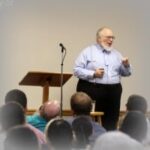So I ask myself, “Why should I use songs and chants? How can I use them? For what purpose?” I find there’s two reasons.
The first one would be to memorize information. First, you might need to memorize lists. Maybe you need to memorize a list of the pronouns or a list of the bones of your body or your math facts. There might be some specific information, lists of information to memorize. You might also have step-by-step processes to memorize, like the steps to diagramming a sentence or the steps to long division. So those are two different categories of things that students need to memorize.
Also, you can use songs and chants for review of information. So let’s say you teach a lesson about nouns. At the end of the lesson you say, “Now we’re going to learn a song to help us review the nouns,” and then the next day when you come to this for your introduction or your review, you can sing the song from yesterday and then build on that. It’s a way of review and just helping to make those connections.
You as the teacher might be more into the songs or you might be into the chants. The same with your class, some classes would really love to sing, and others will enjoy chanting more.
When we learn the parts of a friendly letter, we’ll go like this, [sings] “Heading, greeting, body, closing, signature.”
Please stand and help me with that. It’s just a way to get up and to review and to make it a little bit more hands on. Ready? Here we go.
“Heading, greeting, body, closing, signature.”
If you turn the page again, we have Helping Verbs.
“Helping verbs, helping verbs…”
All right. That’s to the tune of “Jingle Bells.” If you were following along, you noticed that at the end of the first stanza there’s being, been, and be and you might have noticed we sang it the other way around in a different order. Again, I changed the order to match how we have been teaching it in class. Rearrange it to match what you’re doing.
It engages a range of learning styles at the same time. There’s the learning styles. There’s kinesthetic and auditory and visual learners. I don’t believe that a student is just solely a visual learner or solely an auditory learner. I feel like we learn—all of us learn through all these different avenues, and if we can hit all three of those things at the same time, it’s going to make learning more effective.
Whenever we’re singing or doing songs and chants, we hit the kinesthetic part when students are standing up, they’re doing their motions, they’re engaged, they’re involved. I always have students stand up when we sing because I feel like when they’re sitting down, they tend to—it feels like we’re in church or something. We don’t sing very much. If we stand up, we’re ready to go and we’re ready to participate. Of course, putting motions with the songs and chants helps their brain to be firing and completely engaged.
The auditory is hit when we are singing the song or we are speaking the chant. We get those—the students that really do well with need to hear.
Then we got the visual learners whenever we put the words up on the chalkboard or are projected in some way that the students can see it. Because I think that many students could do okay with just you teaching the song to them by rote, but some students really—it will benefit them to actually see the words, to make that connection. I feel like in our society with all the technology that we have, more and more students need to have the visual to look at that.
I would like your help again. If you could all stand we’ll sing this to the tune of “Where is Thumbkin.” We have horizontal, arms this direction, and vertical like this, and oblique is like whichever you want. Ready, go.
“Horizontal, horizontal, vertical, vertical. Horizontal, vertical. Horizontal, vertical. Oblique, oblique.”
I have school students that—even after we learn this, they’ll be like, “Well, I don’t know which way it starts.” And so, horizon, horizontal, think of the horizon outside, it goes this direction.
I would like to talk a little bit next about “How do you make your own song?” Let’s say you have some information that you’re learning that you would love to have a song for and you haven’t found one and you want to make one. How do you go about that?
The first step is to figure out what is the key information that you want to have in your song. There might be some information that you feel is very important and other that is optional. I mean, “If I can figure out how to fit this in, it will be great.” Then put it in the order that you feel it would make sense to come in the song.
The next step would be to create a list of familiar children’s tunes that you could possibly use with this information. What songs do you just know and do your students know? Maybe it’s “Father Abraham,” or “I’m Working on the Railroad.”
Once you have a list of the tunes and your information, then you get to go to the fun part. All right, maybe the tricky part. The third step would be to write your songs. You’re going to take the information that you have and try it out with a bunch of different tunes to figure out which one it might fit with. This will involve maybe stretching the words or stretching the tune to fit in the words. Often I feel it’s easier to keep the words you have and to stretch the tune and make the tune a little bit different than it is to change the words to exactly fit in the tune. It takes a lot of just trying it out with the different tunes that you have to see what could fit.
I think it’s easier than we make it. I think you just have to be brave and stretch it and fit.




Leave a Reply